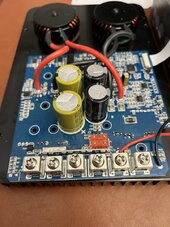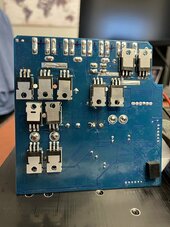Yea ideally that would be fun to do, just up the voltage on everything... I'm not sure if there's a downside to that? I figured I'd stick with the most similar components I can find, that way I rule out any potential compatibility issues.
I should have the new parts today so hopefully I'll be able to solder everything back on the board and test her out. I'm really skeptical that the controller will work after resoldering all the components but I could surprise myself here. If the controller is back online and working, I'm swapping out the thermal pad for the mosfets to thermal paste for the heat dissipation, this will hopefully keep the mosfets slightly cooler in operation. In a perfect world, if the controller is back up and working, I'd like to also add a quiet and small little 5v fan to the internals keeping everything cool based on the load side of the controller which is programmable, it may not be necessary but if it works, why not.
Again alot of these are big if's, I doubt the controller will work properly again but its a long shot. I've taken a ton of time on it so it would be nice to get this working. I've swapped out the controller for my modded PWM controller so at least I'm getting some solar charge to my batteries.
I'm very limited in my knowledge of circuitry but it's been fun learning.




